 Last additions - Maibara 米原市 Last additions - Maibara 米原市 |

The first Maibara oyako portrait panel is about spring. Photos of ordinary people in Maibara looking special.Aug 09, 2011
|
|
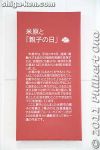
About the Maibara oyako portraits.Aug 09, 2011
|
|
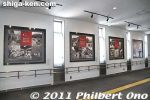
The Maibara oyako portraits are in four panels, one for each season.Aug 09, 2011
|
|
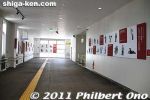
More Oyako photos in the corridor toward the east side. Maibara Station finally looks better with these photos.Aug 09, 2011
|
|
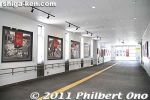
Besides celebrity parent-child portraits, there are four, large photo panels showing parent-child portraits taken in Maibara, seen on the left here.Aug 09, 2011
|
|

The Oyako photos are exhibited along most of the corridor space, mainly toward the east side.Aug 09, 2011
|
|
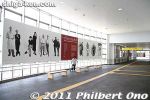
Maibara Station's large window wall with Bruce Osborn's Oyako portraits.Aug 09, 2011
|
|
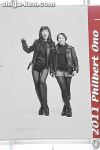
Bruce is a pro photographer based in Hayama, Kanagawa Prefecture. He has been taking celebrity parent-child portraits and publishing them in Mainichi Shimbun.Aug 09, 2011
|
|
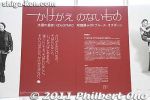
About the exhibition. Architecturally, Maibara Station has nothing to boast about. But at least it now has something pretty.Aug 09, 2011
|
|
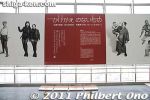
The city of Maibara has pursued a slogan of stressing "Kizuna" or human bonds. Bruce's longtime oyako project fits in well and he was invited to exhibit his parent-child photos in Maibara Station.Aug 09, 2011
|
|

Oyako (Parent-child) photo exhibition by Bruce Osborn held at Maibara Station's corridor from July 2011 to March 2012. The large window wall is now covered with his portraits.Aug 09, 2011
|
|
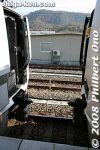
Aug 09, 2011
|
|
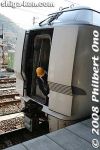
Aug 09, 2011
|
|
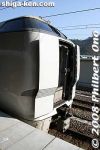
Aug 09, 2011
|
|
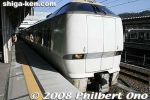
Joining train cars on the Shirasagi express train, Maibara Station.Aug 09, 2011
|
|
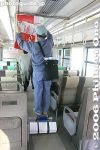
Changing the ads inside the train.Aug 09, 2011
|
|

Inside Biwako Line train to NagahamaAug 09, 2011
|
|
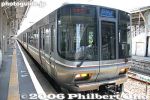
JR Biwako Line to NagahamaAug 09, 2011
|
|
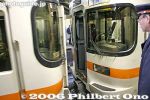
3. Joining train cars on the Tokaido Line, Maibara Station.Aug 09, 2011
|
|
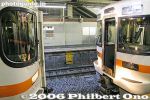
2. Joining train cars on the Tokaido Line, Maibara Station.Aug 09, 2011
|
|
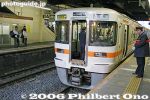
1. Joining train cars on the Tokaido Line, Maibara Station.Aug 09, 2011
|
|
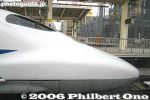
Aug 09, 2011
|
|
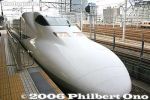
Shinkansen train. It takes about 2.5 hours from Tokyo to Maibara.Aug 09, 2011
|
|
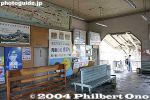
Inside the old Ohmi Railway Maibara Station. I liked this old building with remnants of the train line's golden age.Aug 09, 2011
|
|
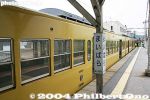
Old Ohmi Railway Maibara Station.Aug 09, 2011
|
|
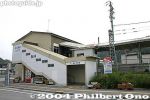
The old Ohmi Railways Maibara Station. Torn down in 2007. It was slightly apart from the old Maibara Station. Now it's closer to Maibara Station.Aug 09, 2011
|
|
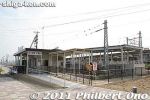
The new Ohmi Railways Maibara Station. This station is now closer to the JR Maibara Station, but still not integrated in Maibara Station. I thought it was a temporary structure.Aug 09, 2011
|
|

Next to Maibara Station's east exit is the Ohmi Railways Station. Otherwise, there's nothing much on the east side. For a shinkansen station, Maibara is pretty lonely.Aug 09, 2011
|
|
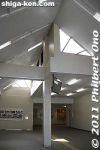
Inside Maibara Station's east exit, just a large empty space.Aug 09, 2011
|
|
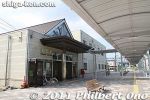
Maibara Station's east exit has a bus stop.Aug 09, 2011
|
|
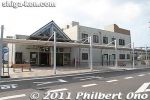
Maibara Station's east exit has also been completely renovated.Aug 09, 2011
|
|
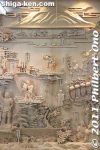
Mt. Ibuki at the top.Aug 09, 2011
|
|
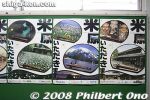
Maibara PR posters.Aug 09, 2011
|
|
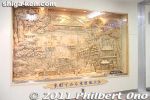
THe east exit has a nice, wooden, relief sculpture of Maibara's major sights. Made by woodcarvers in Kami-nyu in Samegai.Aug 09, 2011
|
|
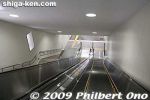
Escalators going to the east exit of Maibara Station.Aug 09, 2011
|
|
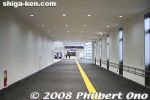
Corridor toward the east exit. White walls galore. There were plans for Hiro Yamagata, a famous artist from Maibara, to paint the walls here, but they never materialized due to the cost.Aug 09, 2011
|
|
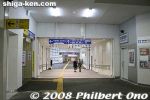
Aug 09, 2011
|
|
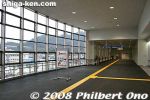
Maibara Station's window wall, right outside the turnstile. This is the first thing you see when you give your ticket to go out.Aug 09, 2011
|
|
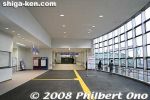
The interior is basically white.Aug 09, 2011
|
|
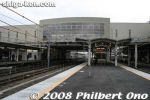
Window wall from the outside.Aug 09, 2011
|
|

Maibara Station as seen from a train platform. The station's focal point is the huge window wall at the center.Aug 09, 2011
|
|
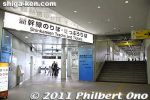
Maibara Station is Shiga's sole shinkansen bullet train station and transfer station for the Hokuriku region.Aug 09, 2011
|
|
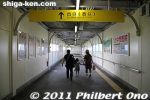
Corridor going to the west side. Maibara Station was renovated during 2007-2009. Most parts of Maibara Station are new, and others are old. This is an old corridor. Aug 09, 2011
|
|
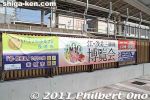
Azai Sisters Expo poster.Aug 09, 2011
|
|
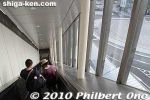
On the west side of Maibara Station is this long escalator to go down. The up escalator is inside the station building.Aug 09, 2011
|
|
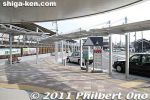
Bus and taxi stops at Maibara Station's west exit. On this side of the station, you'll find Heiwado department store and the Maibara City Hall. MAPAug 09, 2011
|
|
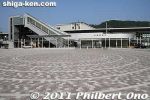
Maibara Station is a major transfer point for the Tokaido Line, Hokuriku Line, and shinkansen bullet train. From this station, you can go on to Kyoto (or Tokyo in the east) in the west or to Fukui, Kanazawa, and Toyama up north.Aug 09, 2011
|
|
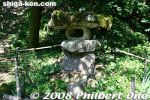
Jul 19, 2011
|
|
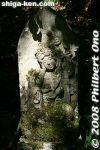
Kannon statue at Kannonji temple.Jul 19, 2011
|
|

Jul 19, 2011
|
|
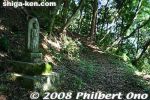
Kannon statue at Kannonji.Jul 19, 2011
|
|
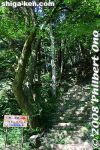
A little path lined with little Kannon statues at Kannonji.Jul 19, 2011
|
|
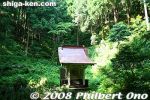
Little shrine nearby.Jul 19, 2011
|
|
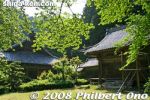
Hondo on left and Yakushido on right.Jul 19, 2011
|
|
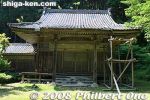
Yakushido Hall 薬師堂Jul 19, 2011
|
|
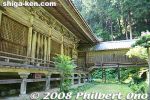
Corridor connecting the Hondo to the Yakushido Hall.Jul 19, 2011
|
|
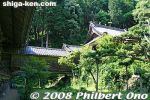
Jul 19, 2011
|
|
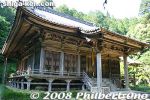
Kannonji temple HondoJul 19, 2011
|
|
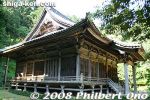
Jul 19, 2011
|
|
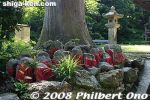
Jul 19, 2011
|
|
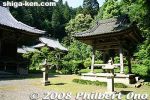
Kannonji temple bell.Jul 19, 2011
|
|
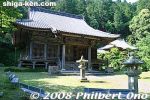
KannonjiJul 19, 2011
|
|
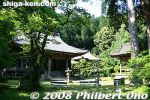
Jul 19, 2011
|
|

About the Hondo hall.Jul 19, 2011
|
|
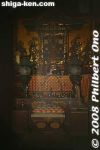
Altar inside Hondo.Jul 19, 2011
|
|
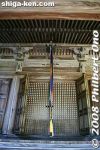
Jul 19, 2011
|
|
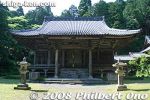
Kannonji temple Hondo main hall in Maibara, Shiga. Ishida Mitsunari was suppsedly a young monk here where he met Toyotomi Hideyoshi.Jul 19, 2011
|
|
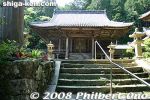
Jul 19, 2011
|
|
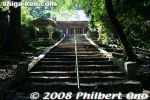
Steps to the Hondo main hall of Kannonji temple.Jul 19, 2011
|
|

Jul 19, 2011
|
|

Map of Kannonji temple grounds.Jul 19, 2011
|
|

About Mitsunari servng tea to Hideyoshi.Jul 19, 2011
|
|
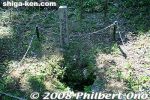
Well where Ishida Mitsunari fetched water for tea he made for Toyotomi Hideyoshi in three servings at different temperatures to quench Hideyoshi's thirst well.Jul 19, 2011
|
|
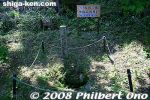
Well where Ishida Mitsunari fetched water for tea he made for Toyotomi Hideyoshi in three servings. 観音寺 水汲みの井戸Jul 19, 2011
|
|
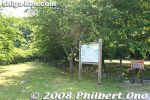
Jul 19, 2011
|
|

About Kannonji temple in Maibara.Jul 19, 2011
|
|
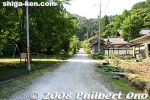
Omote path in Kannonji temple in Maibara.Jul 19, 2011
|
|
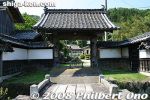
Kannonji temple in Maibara. It belongs to the Tendai Buddhist sect.Jul 19, 2011
|
|
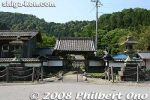
Gate of Kannonji temple in Maibara. MAPJul 19, 2011
|
|
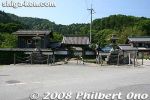
Gate of Kannonji temple in Maibara. Kannonji temple is noted as the place where Toyotomi Hideyoshi rested during falconry session when he met Ishida Mitsunari who was studying at the temple.Jul 19, 2011
|
|
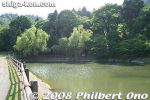
Kannonji Pond 観音寺池Jul 19, 2011
|
|
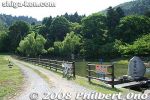
Pond in front of Kannonji temple in Maibara.Jul 19, 2011
|
|
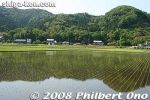
Jul 19, 2011
|
|
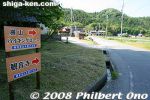
Way to Kannonji temple in Maibara.Jul 19, 2011
|
|
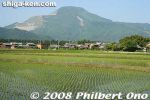
Scenery on the way to Kannonji temple in Maibara. Mt. Ibuki and rice paddies.Jul 19, 2011
|
|
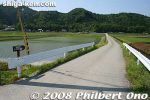
Turn in here to go to Kannonji temple in Maibara.Jul 19, 2011
|
|
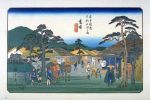
Hiroshige's woodblock print of Banba-juku from his Kisokaido series.Apr 23, 2011
|
|

Hiroshige's woodblock print of Imasu-juku next to Kashiwabara-juku shows the border between Imasu and Kashiwabara. There is an inn on the Imasu side (left, called Ryogokuya Inn) and Kashiwabara side (called Kameya Inn).Apr 23, 2011
|
|
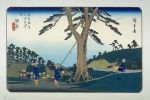
Hiroshige's print of Samegai-juku in his Kisokaido series.Apr 21, 2011
|
|
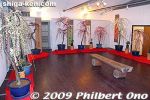
Exhibition in MizunoekiApr 21, 2011
|
|
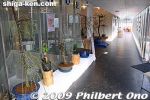
Exhibition in MizunoekiApr 21, 2011
|
|
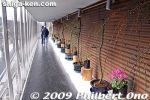
Exhibition space in MizunoekiApr 21, 2011
|
|
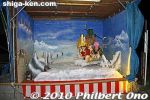
Some displays move.Apr 21, 2011
|
|
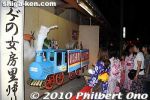
Apr 21, 2011
|
|
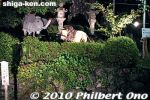
Apr 21, 2011
|
|
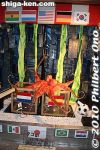
Fortune-telling octopus.Apr 21, 2011
|
|
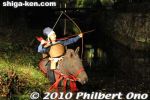
Apr 21, 2011
|
|
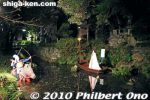
Figures at Isame-no-Kiyomizu spring during Jizo-bon festival.Apr 21, 2011
|
|
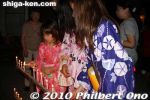
Apr 21, 2011
|
|
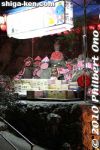
Jizo statues during Jizo-bon.Apr 21, 2011
|
|
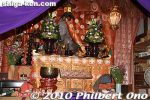
Jizo altar at Jizo-do temple in Samegai, Maibara.Apr 21, 2011
|
|
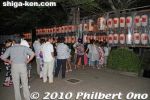
People line up at Jizo-do temple to pray to Jizo. Apr 21, 2011
|
|
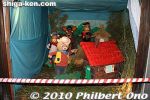
Apr 21, 2011
|
|
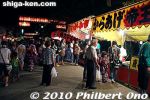
Jizo-bon in Samegai, Maibara.Apr 21, 2011
|
|
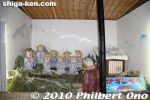
Apr 21, 2011
|
|
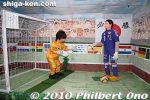
Apr 21, 2011
|
|
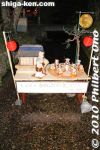
Apr 21, 2011
|
|
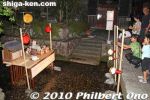
Jizo-bon is held along the Nakasendo road with various displays of paper mache figures made by local school children.Apr 21, 2011
|
|

Apr 21, 2011
|
|
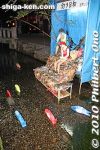
On Aug. 23 and 24, Samegai's Jizo-do temple holds the annual Jizo-bon festival at night. The Nakasendo Road has food stalls and displays of paper mache figures. 地蔵盆Apr 21, 2011
|
|
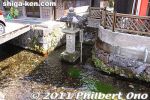
The second of Samegai's famous Three Spring Waters. This one is called Juo-sui. 十王水Apr 21, 2011
|
|
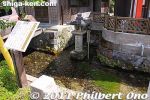
Apr 21, 2011
|
|

Jizogawa River was also noted for a freshwater fish called hariyo or stickleback. However, researchers have found that the hariyo seems to have become extinct here by May 2010.Apr 21, 2011
|
|
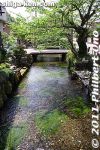
Apr 21, 2011
|
|
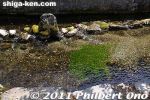
Apr 21, 2011
|
|
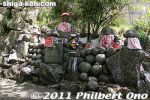
Jizo statues in Samegai. In 817, the priest Saicho carved a Jizo statue in Samegai and prayed for rain during a drought. It then rained heavily for three days. The Jizo was originally placed in the river to prsy for the souls of the fish.Apr 21, 2011
|
|

Apr 21, 2011
|
|

Apr 21, 2011
|
|
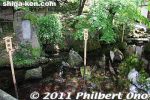
Three of Samegai's famous rocks are here, indicated by these wooden signs. 鞍懸石Apr 21, 2011
|
|
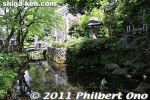
Apr 21, 2011
|
|
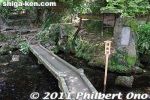
Rock where Yamato Takeru sat.Apr 21, 2011
|
|
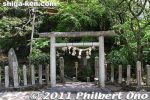
Torii gate to Isame no Shimizu spring waters.Apr 21, 2011
|
|
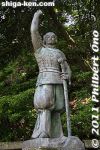
Statue of Yamato Takeru in Samegai-juku's water spring. It is not certain that this was the spring which Yamato Takeru used. Another theory says that he used Tamakurabe Clear Spring in Sekigahara, Gifu.Apr 21, 2011
|
|
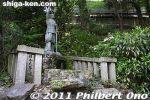
Statue of Yamato Takeru at Samegai's water spring. He defeated the boar, but not before the boar showered him with poisonous rain. He went to Isame no Shimizu whose waters healed him. Then he went on to Ise, but died soon afterward. 日本武尊の�Apr 21, 2011
|
|
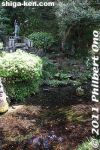
Yamato Takeru was a legendary prince and warrior who traveled a lot and defeated his enemies. However, he met his demise at Mt. Ibuki when he battled an evil god disguised as a white boar.Apr 21, 2011
|
|
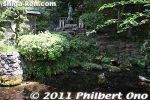
Isame-no-Kiyomizu spring was supposedly where famed warrior Yamato Takeru bathed to heal his wounds after battling an evil boar on Mt. Ibuki.Apr 21, 2011
|
|
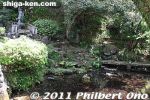
Next to Isame no Shimizu is a statue of Yamato Takeru.Apr 21, 2011
|
|

About Isame no Shimizu and Yamato Takeru.Apr 21, 2011
|
|
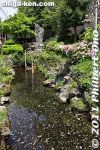
Isame no Shimizu is the natural spring which is the source of Jizogawa River. The name "Samegai" also comes from this spring. 居醒の清水Apr 21, 2011
|
|

This is one of Samegai's famous Three Spring Waters. This one, in front of Kamo Shrine, is called Isame-no-Kiyomizu. 居醒の清水Apr 21, 2011
|
|
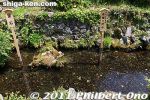
Samegai is famous for its Three Spring Waters and Four Rocks. Apr 21, 2011
|
|
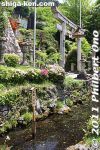
In front of Kamo Shrine is crystal clear water from a natural spring called Isame no Shimizu. This is the source of Samegai's famous Jizogawa River and one of Japan's 100 Famous Springs of the Heisei Period.Apr 21, 2011
|
|

Apr 20, 2011
|
|
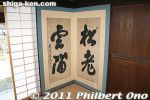
Apr 20, 2011
|
|
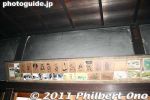
Apr 20, 2011
|
|
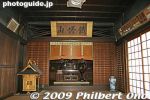
Inside Kashiwabara-juku's former Honjin in Tarui, Gifu.Apr 20, 2011
|
|
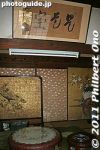
Apr 20, 2011
|
|
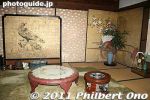
Inside Kashiwabara-juku's former Honjin in Tarui, Gifu.Apr 20, 2011
|
|
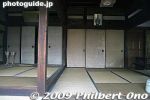
Inside Kashiwabara-juku's former Honjin in Tarui, Gifu. On the left is the Jodan-no-Ma where the daimyo lord stayed.Apr 20, 2011
|
|

Apr 20, 2011
|
|
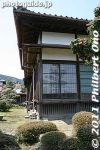
Apr 20, 2011
|
|
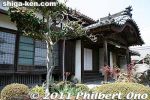
Apr 20, 2011
|
|

Apr 20, 2011
|
|

The Honjin was where VIPs such as daimyo lodged.Apr 20, 2011
|
|
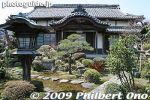
Kashiwabara-juku's Honjin in Tarui, Gifu. During the Meiji Period while still in Kashiwabara, the former Honjin was used as a primary school before it was moved to Tarui.Apr 20, 2011
|
|
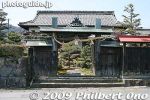
Kashiwabara-juku's Honjin in Tarui, Gifu. The former Honjin served as the Nangu Shrine priest's residence.Apr 20, 2011
|
|
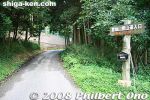
Hiking path to Mt. Ryosen. Best not to hike alone.Apr 20, 2011
|
|
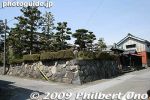
In Tarui in Gifu, the building which served as Kashiwabara's Honjin still exists.Apr 20, 2011
|
|
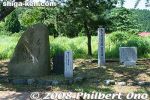
Basho haiku monumentApr 20, 2011
|
|
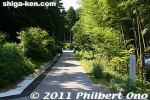
Entrance to Takekurabe Castle on a mountain. 長比Apr 20, 2011
|
|
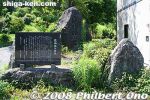
Nemonogatari-no-Sato (Bedtime Story Town) momument. 寝物語の里Apr 20, 2011
|
|
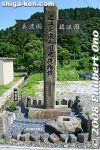
Shiga sideApr 20, 2011
|
|
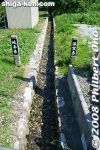
Prefectural boundary between Gifu (Imasu) and Shiga (Kashiwabara) is this narrow groove. The cross-border bedtime chatter in the old days gave this place the name Nemonogatari-no-Sato.Apr 20, 2011
|
|
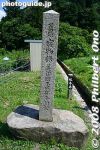
Gifu side.Apr 20, 2011
|
|
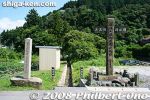
Nemonogatari-no-Sato is where the prefectural boundary between Gifu (Imasu) and Shiga is located. The inns are no longer here, but guests at both inns used to talk to each other across the border before sleeping.Apr 20, 2011
|
|
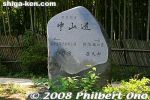
Large stone marker pointing the way to Kashiwabara and a neighboring village.Apr 20, 2011
|
|
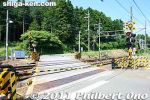
Cross the train tracks here on the east end of Kashiwabara.Apr 20, 2011
|
|
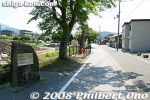
East end of Kashiwabara-juku.Apr 20, 2011
|
|

Kashiwabara-juku stone marker.Apr 20, 2011
|
|
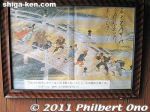
Apr 20, 2011
|
|
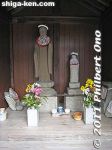
Terutehime-kasa Jizo is the smaller statue on the right. 照手姫笠地蔵Apr 20, 2011
|
|

Terutehime-kasa Jizo 照手姫笠地蔵Apr 20, 2011
|
|
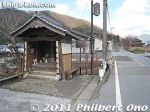
Terutehime-kasa JizoApr 20, 2011
|
|
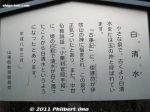
About Shirashozu. This might be the spring where Yamato Takeru healed himself after being poisoned by the evil god on Mt. Ibuki. 白清水Apr 20, 2011
|
|
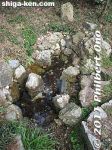
Shirashozu. Note that this water has not been certified for safe drinking. 白清水Apr 20, 2011
|
|
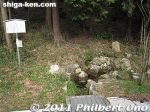
Water spring called Shirashozu. 白清水Apr 20, 2011
|
|
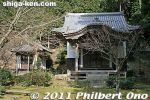
Jobodai-in templeApr 20, 2011
|
|
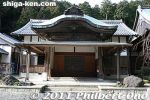
Apr 20, 2011
|
|
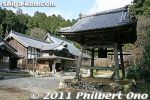
Jobodai-in temple's Bell towerApr 20, 2011
|
|
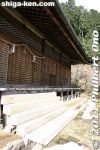
Apr 20, 2011
|
|
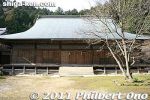
Jobodai-in temple's Hondo main hall. This temple served as lodging for the likes of Oda Nobunaga, Toyotomi Hideyoshi, Azai Nagamasa, and Kobayakawa Hideaki. 成菩提院Apr 20, 2011
|
|
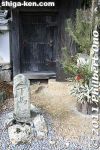
Apr 20, 2011
|
|

Jobodai-in temple belongs to the Tendai Buddhist Sect. It was founded in 815 by priest Saicho who built a shack here to lodge while on his way to eastern Japan. The temple's resident priests include many famous ones like Tenkai Daisojo.Apr 20, 2011
|
|
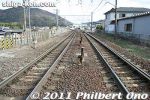
Apr 20, 2011
|
|
|
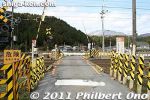
Cross the train tracks to visit another temple.Apr 20, 2011
|
|
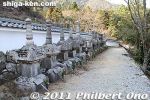
Other Kyogoku Clan graves.Apr 20, 2011
|
|
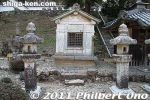
The most famous is Kyogoku Takatsugi. This is his grave.Apr 20, 2011
|
|
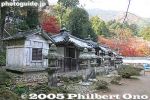
Tokugen-in is also famous for the graves of the Kyogoku Clan.Apr 20, 2011
|
|
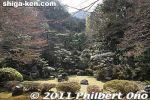
Tokugen-in's garden. Admission 300 yen.Apr 20, 2011
|
|
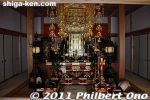
Inside Tokugen-in's main hall. Apr 20, 2011
|
|
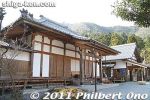
Tokugen-in main hall. 清滝 徳源院Apr 20, 2011
|
|
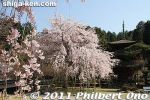
Apr 20, 2011
|
|
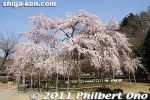
Tokugen-in's other cherry tree.Apr 20, 2011
|
|
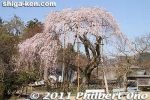
Tokugen-in is famous for two beautiful cherry blossoms trees. This one is a weeping cherry tree.Apr 20, 2011
|
|
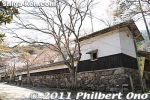
Kiyotaki Tokugen-in temple used to be Kashiwabara Castle. 清滝 徳源院Apr 20, 2011
|
|

Way to Tokugen-in temple in Kiyotaki during cherry blossom season in April.Apr 20, 2011
|
|
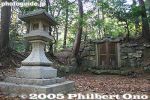
Apr 20, 2011
|
|
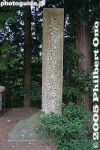
Apr 20, 2011
|
|
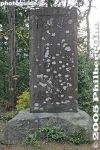
Apr 20, 2011
|
|

Kitabatake Tomoyuki-kyo Grave 北畠具行卿墓Apr 20, 2011
|
|
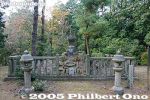
Kitabatake Tomoyuki-kyo Grave. Kitabatake Tomoyuki (1290-1332) was a high-ranking Imperial Court official during the late Kamakura Period. National Historic Site 北畠具行卿墓Apr 20, 2011
|
|
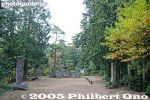
Kitabatake Tomoyuki-kyo Grave 北畠具行卿墓 Apr 20, 2011
|
|
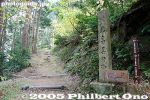
Path to Kitabatake Tomoyuki-kyo GraveApr 20, 2011
|
|
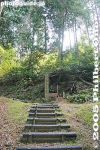
Way to Kitabatake Tomoyuki-kyo GraveApr 20, 2011
|
|
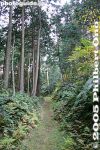
Path to Kitabatake Tomoyuki-kyo GraveApr 20, 2011
|
|
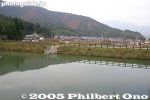
Kiyotaki in the background.Apr 20, 2011
|
|
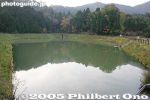
Apr 20, 2011
|
|
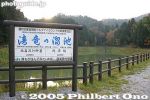
Apr 20, 2011
|
|

Way to Kitabatake Tomoyuki-kyo Grave 北畠具行卿墓Apr 20, 2011
|
|
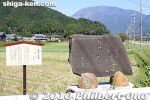
Haiku poem by Basho Matsuo about Mt. Ibuki.Apr 20, 2011
|
|
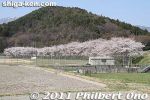
Cherry blossoms next to Kashiwabara Junior High School sports ground.Apr 20, 2011
|
|

Mt. Ibuki as famed haiku poet Basho must have seen it.Apr 20, 2011
|
|
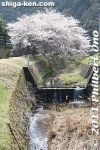
Cherry blossoms and Amanogawa River famous for fireflies in June.Apr 20, 2011
|
|
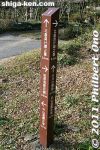
DirectionsApr 20, 2011
|
|
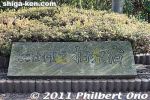
Kashiwabara-juku sign.Apr 20, 2011
|
|
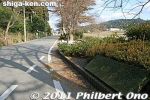
Apr 20, 2011
|
|
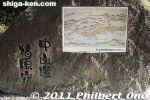
Kashiwabara-juku stone marker.Apr 20, 2011
|
|
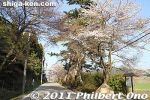
West end of Kashiwabara-juku in spring.Apr 20, 2011
|
|
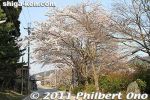
West end of Kashiwabara-juku where there was a West Guard Gate.Apr 20, 2011
|
|

About the West Guard Gate.Apr 20, 2011
|
|

About Kashiwabara Ichirizuka distance marker.Apr 20, 2011
|
|
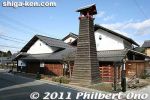
Kashiwabara has been converting its buildings into a traditional look.Apr 20, 2011
|
|
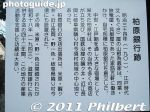
Kashiwabara Bank opened in 1901 by local merchants. There were other branches nearby such as Omi-Nagaoka and Imasu. The bank merged with Shiga Bank and closed in 1943.Apr 20, 2011
|
|
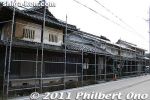
Former Kashiwabara Bank being renovated.Apr 20, 2011
|
|
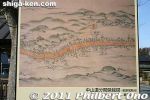
Map of Kashiwabara-jukuApr 20, 2011
|
|

Road markerApr 20, 2011
|
|
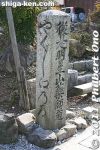
Road markerApr 20, 2011
|
|
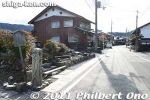
Road markers are commonly found at intersections to tell travelers which way to go.Apr 20, 2011
|
|

About Ochaya Goten. 御茶屋御殿跡Apr 20, 2011
|
|
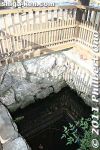
Ochaya Goten well.Apr 20, 2011
|
|
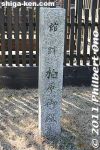
Apr 20, 2011
|
|
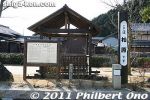
Sign and stone marker indicating the site of the Ochaya Goten in Kashiwabara-juku.Apr 20, 2011
|
|
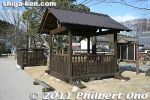
All that remains of Ochaya Goten is this well.Apr 20, 2011
|
|
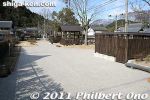
Site of Ochaya Goten, a small palace built for shoguns to rest during the early Edo Period. Tokugawa Ieyasu, Hidetada, and Iemitsu all stayed here. 御茶屋御殿跡Apr 20, 2011
|
|
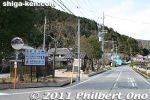
Toward the west end of Kashiwabara is this site called Ochaya Goten, a small palace built for shoguns to rest. 御茶屋御殿跡Apr 20, 2011
|
|

Kashiwabara has one long main street called Nakasendo.Apr 20, 2011
|
|
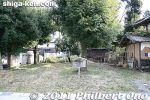
Apr 20, 2011
|
|
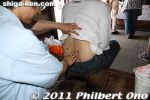
Free moxa cautery treatments at Ibuki-do during Yaito Matsuri, Kashiwabara-juku. You can hardly feel anything. 伊吹堂亀屋佐京商店Apr 20, 2011
|
|
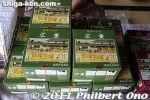
During the Yaito Matsuri, the Ibuki-do has an open house and sells their moxa. 伊吹堂亀屋佐京商店Apr 20, 2011
|
|
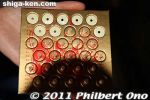
Moxa made by Ibuki-do in Kashiwabara. 伊吹堂亀屋佐京商店Apr 20, 2011
|
|
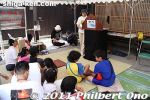
Kami-shibai (picture card) story-telling.Apr 20, 2011
|
|
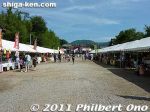
Main venue of Yaito Matsuri next to Ibuki-do, the moxa shop.Apr 20, 2011
|
|
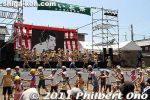
Yaito Matsuri stage entertainment by local kindergarteners.Apr 20, 2011
|
|
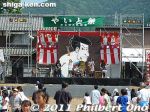
All-girl rock band at Yaito Matsuri.Apr 20, 2011
|
|
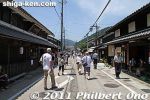
Yaito Matsuri at Kashiwabara-juku, Maibara.Apr 20, 2011
|
|
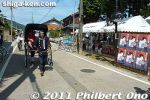
Yaito Matsuri also features rickshaw rides.Apr 20, 2011
|
|
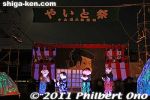
Stage entertainment at Yaito Matsuri at night.Apr 20, 2011
|
|
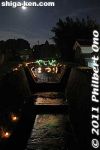
Kashiwabara holds a summer festival on a weekend in late July called Yaito Matsuri. "Yaito" means mogusa or moxa cautery. 柏原宿やいとまつりApr 20, 2011
|
|
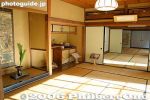
Kashiwabara-juku History Museum also preserves this former Japanese-style home built in 1917.Apr 20, 2011
|
|
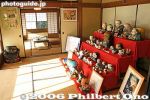
Fukusuke statues at Kashiwabara-juku History Museum (2nd floor). Fukusuke (福助) is based on an actual person who was a shop clerk at the Kameya moxa shop. He had a large head and big ears and was honest, friendly, and a hard workerApr 20, 2011
|
|
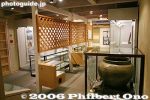
Kashiwabara-juku History Museum has more exhibits in the detached kura storehouse.Apr 20, 2011
|
|
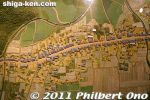
Kashiwabara-juku layout in the old days. Kashiwabara-juku was Shiga's longest post town (shukuba-machi) extending to about 1.4 km. 柏原宿歴史館Apr 20, 2011
|
|
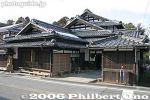
Kashiwabara-juku History Museum in a beautiful Japanese-style home with a garden and kura storehouse. Besides exhibits of local history, there is a restaurant and gift shop. 柏原宿歴史館Apr 20, 2011
|
|

Kashiwabara-juku History Museum's mini theater shows a short movie about Kashiwabara-juku's history. The museum was a private residence built in 1917. The local government bought it and made this museum.Apr 20, 2011
|
|

History and old map of Kashiwabara.Apr 20, 2011
|
|
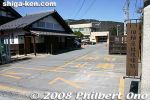
Former site of Kashiwabara's village hall. Now a medical clinic seen in the rear. The traditional-looking building on the left is a public toilet.Apr 20, 2011
|
|
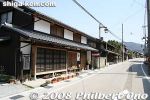
Site of a sake brewer.Apr 20, 2011
|
|
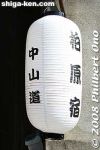
Apr 20, 2011
|
|
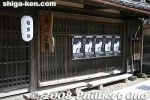
Yaito-juku faces Ibuki-do.Apr 20, 2011
|
|
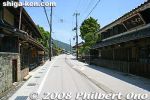
Ibuki-do on the right. Fukusuke (福助) is based on an actual person who was a shop clerk at the Kameya moxa shop. He had a large head and big ears and was honest, friendly, and a hard worker.Apr 20, 2011
|
|
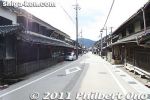
Ibuki-do on the left. The current Fukusuke statue is the second one made by the 6th-generation shop owner Shichibei. The original statue was hand-carved on the order of 2nd-generation shop owner. 伊吹堂亀屋佐京商店Apr 20, 2011
|
|
| 1947 files on 8 page(s) |
2 |  |
 |
 |
 |
|